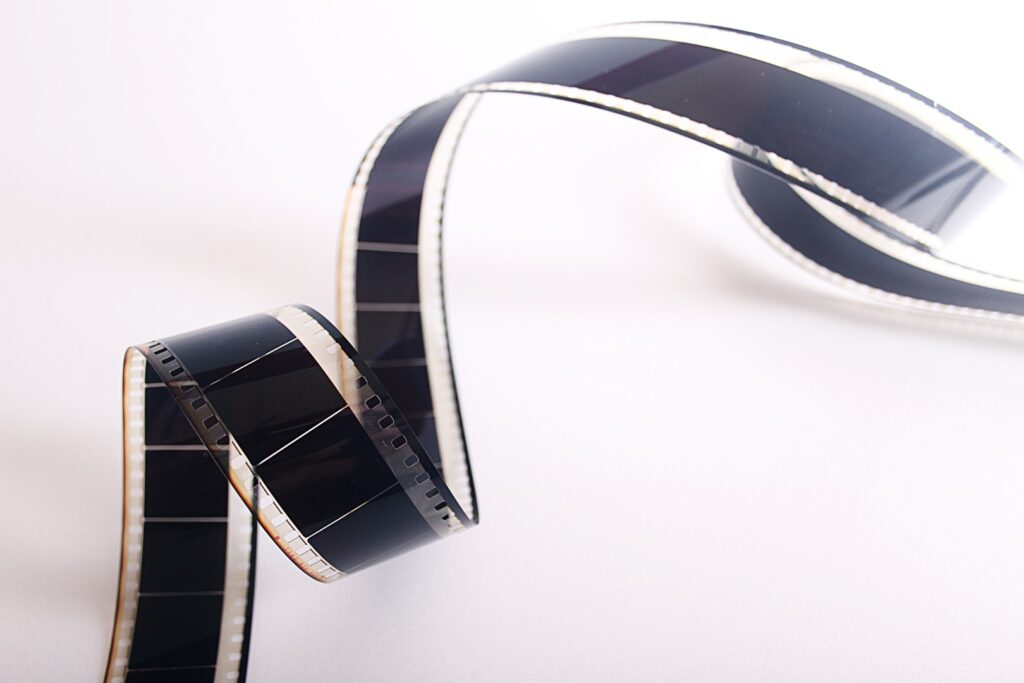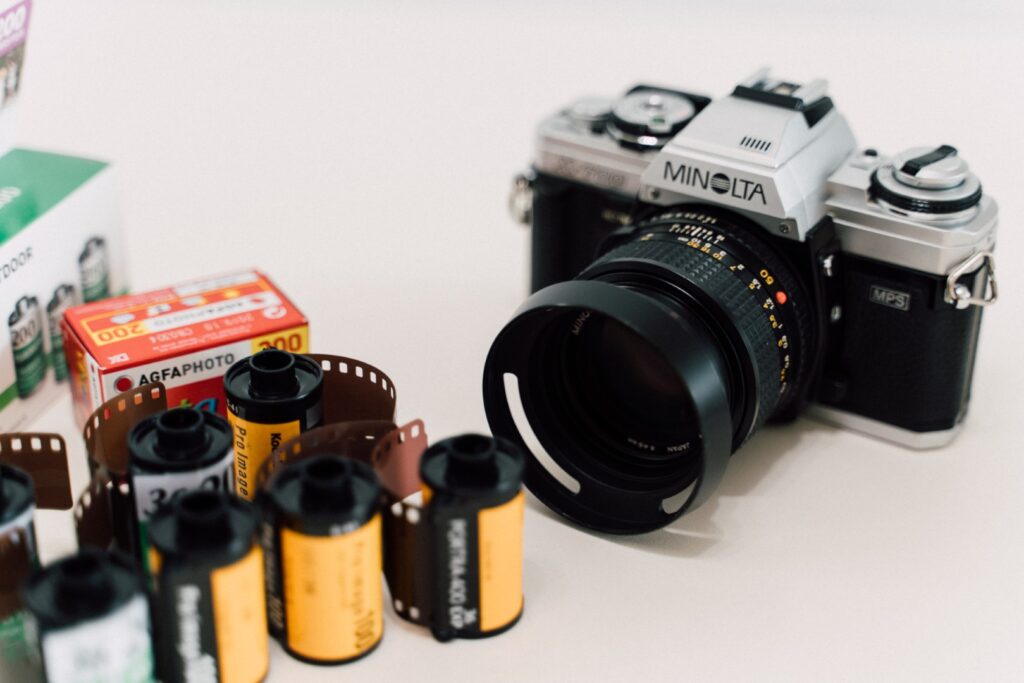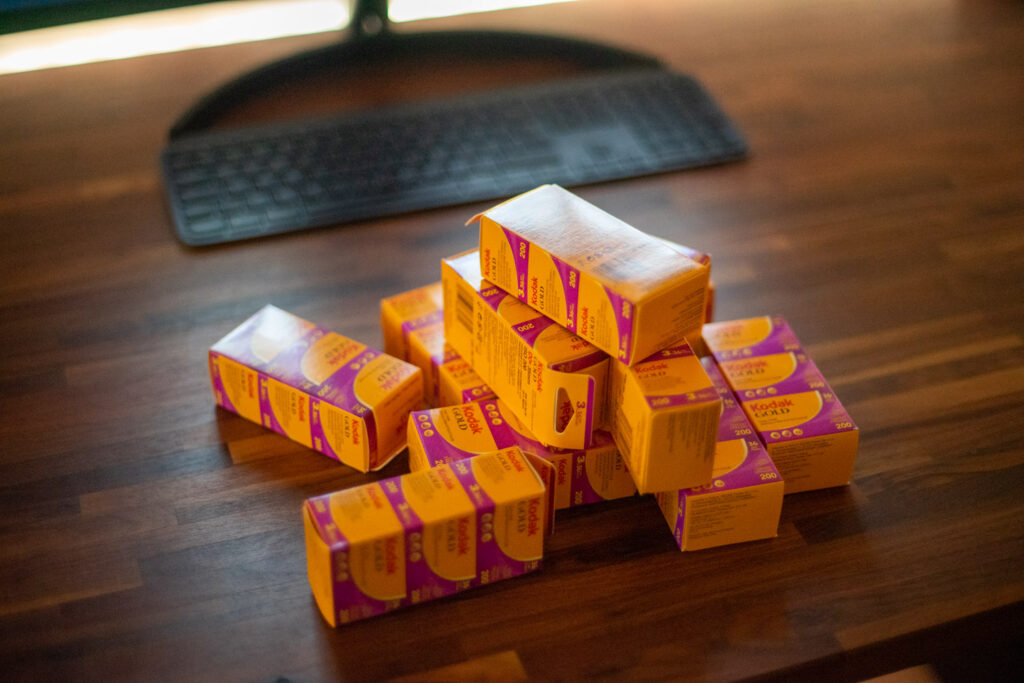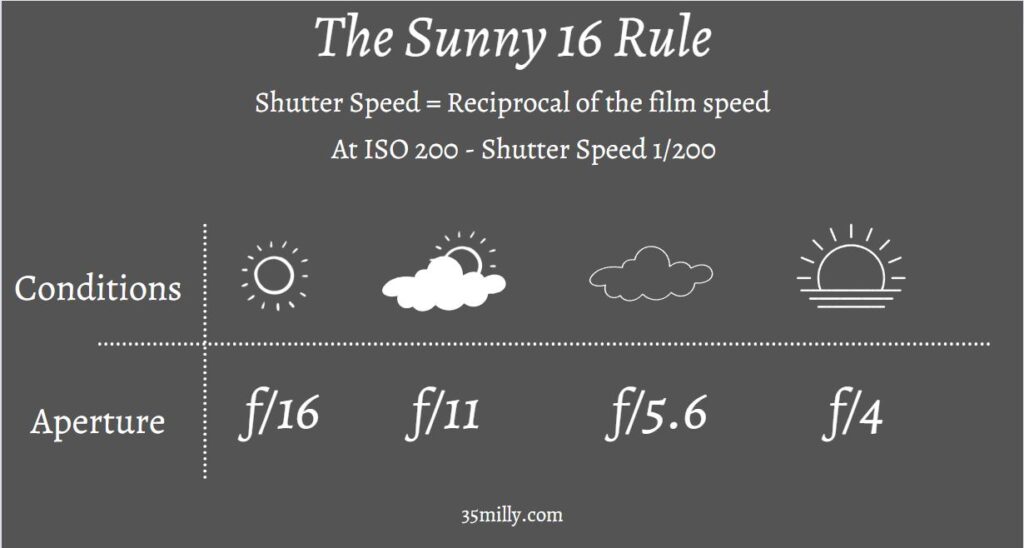Slide film, also known as reversal film, is a type of photographic film that has been used for decades. Although it is not as commonly used as digital photography or negative film, slide film still has a dedicated following among photographers for its unique characteristics. However, it can be a challenging medium to work with and there are many common questions that arise among photographers who are interested in using slide film. In this article, we will answer some of the most common questions about slide film to help you get started with this unique photographic medium. And if you are curious which slide film is still available on the market today, make sure to check out this article as well.
Is slide film better than negative film?

When it comes to film photography, the debate whether slide film or negative film is better is a pretty common one. While both types of films have their own unique strengths and weaknesses, choosing between them ultimately depends on what the photographer wants to achieve. Slide film is known for producing rich, vibrant colors that can make landscapes and nature photography pop. However, it has a narrow exposure range, making it more challenging to use and process. Negative film, on the other hand, has a wider exposure range, which makes it easier to work with, and it’s capable of capturing a broader range of tones, making it ideal for portrait photography. Negative film is also more affordable and widely available than slide film. Ultimately, both films have their place in the world of photography, and which is best depends on what the photographer values most. It’s a matter of personal preference, style, and the intended use of the final product.
Is slide film sharper than negative film?
When it comes to the debate of whether slide film is sharper than negative film, it’s difficult to give a definitive answer. It really depends on a few different factors that can impact how sharp the image appears to the human eye. For one thing, the contrast of the film can play a role in perceived sharpness, with slide film generally having a higher contrast than negative film. Another factor is the grain size of the film, with slide film typically having a finer grain that can add to the perceived sharpness. But it’s worth noting that other factors, such as the quality of the lens and the focus of the shot, can also impact sharpness.
Why use slide film?
If you’re considering using slide film, there are some compelling reasons to give it a try. For one thing, slide film is known for its vivid and accurate colors, which can really make your images stand out. Another advantage of slide film is its ability to capture fine details with exceptional sharpness, thanks to the film’s fine grain size. Additionally, slide film is great at handling high-contrast scenes with bright highlights and deep shadows. And as a photographer, there’s something truly special about holding a developed slide film. The vibrant colors and sharp details can make a photo feel like it’s leaping off the page. Slide film has a certain magic to it that can be hard to replicate with other types of film. t’s a unique experience that every photographer should try at least once.
Does slide film need to be developed?
Yes, slide film needs to be developed just like any other type of film. The process for developing slide film is a bit different than developing negative film, but it still involves chemically processing the film to bring out the latent image. After the film has been exposed in the camera, it needs to be processed in a specialized slide film developer to bring out the colors and details. Once developed, the slide film can be mounted and viewed using a slide projector or a specialized viewer. Probably the most popular process for slide film developing is the E-6 process.
How does slide film work?
Slide film works differently than negative film. When light enters the camera and hits the slide film, it creates a latent image on the film’s emulsion layer. Unlike negative film, where the image is inverted and needs to be flipped during printing to produce a positive image, the latent image on slide film is already a positive image. To bring out the full range of colors and details in the image, the slide film needs to be developed using a specialized slide film developer that works to reveal the image. The developed slide film can then be viewed as a positive image directly on the film itself or used to make prints or digital scans.
Can slide film be printed?
Of course, slide film can be printed, but the process is a little different compared to printing from negative film. To print from slide film, you need to mount the film onto a transparency or glass slide first. This allows light to pass through the film and create a larger positive image on the printing paper. Unlike negative film, which needs to be inverted during printing to create a positive image, slide film already produces a positive image, so no inversion is necessary. Printing from slide film can be more challenging than negative film because you have to carefully choose the paper and developer to bring out the full range of colors and details in the image. Nevertheless, with the right equipment and techniques, slide film can create stunning prints with vibrant colors and sharp details that are hard to beat.
What is the point of slide film?
The point of slide film is to produce a positive image directly onto the film itself. This means that the final image doesn’t require any additional processing or printing to be viewed as a positive. Slide film is particularly useful for photographers who want to create a physical, tangible image that can be viewed directly on the film or projected onto a screen. Additionally, slide film is known for producing images with vibrant colors and sharp details, making it a popular choice for landscape, nature, and travel photography.

Is slide film harder to develop?
Developing slide film can be a bit more challenging compared to negative film. This is because slide film is a positive film that produces a direct positive image on the film itself, while negative film creates a negative image that needs to be inverted during the printing process. As a result, slide film requires specific chemicals and techniques to bring out its full range of colors and details. Moreover, slide film is known for its high contrast and unforgiving nature, meaning that any small errors during development can significantly impact the final image’s quality.
Why is slide film so expensive?
Slide film is generally more expensive than negative film due to several factors. Firstly, slide film is a niche product with a limited market compared to negative film, which is more commonly used. Additionally, the production process of slide film is more complex, which increases the cost of manufacturing. Slide film has a thinner film base than negative film, which adds to the production cost. Moreover, the production of slide film requires tighter quality control measures to ensure consistent color and exposure, further increasing the cost. Lastly, because slide film has a lower demand than negative film, it’s produced in smaller quantities, which drives up the price. In summary, the higher cost of slide film is due to a combination of factors, including its niche market, complex production process, quality control standards, and lower demand.
Why is slide film so hard to shoot?
Slide film is known for producing stunningly beautiful and vivid colors, but it’s no secret that it can be a challenging medium to work with. Unlike negative film, which allows for a wide range of exposure, slide film has a much narrower exposure range, requiring precise metering and a deep understanding of lighting conditions. This means that any errors in exposure or color balance can result in disappointing and costly images that fall short of your expectations. Additionally, the high contrast of slide film makes it difficult to capture details in both bright and dark areas, so it’s crucial to carefully manage light sources and use filters as needed. In essence, slide film demands a high level of technical skill and attention to detail to unlock its full potential.
Do you need a special camera for slide film?
You don’t need a special camera to use slide film. Any camera that can use 35mm or medium format film is compatible with slide film. However, it’s essential to note that slide film has unique characteristics that can affect the final image’s quality. This means that it’s important to pay attention to the exposure and lighting conditions when using slide film. It’s recommended to use a camera with a reliable light meter or an external light meter to ensure accurate exposure.
Can you push slide film?
Pushing film is a technique where you deliberately underexpose the film and compensate for it during development. While it’s a popular technique for negative film, it’s not a great idea for slide film. The reason is that slide film has a narrow exposure range, so even small changes in exposure can have a big impact on the final image quality. Pushing slide film can result in overexposed highlights and loss of detail in the shadows. Also, slide film has a fixed ISO rating, which determines its sensitivity to light, so pushing the film can cause color shifts and contrast changes that are hard to control. While it’s technically possible to push slide film, it’s generally not recommended because it can lead to lower image quality and unpredictable results.




